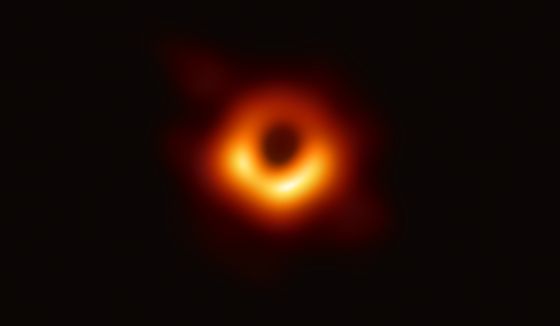The black hole shines 75 times brighter in just 2 hours, and astronomers were amazed that 'unprecedented'

by
It turned out that the black hole located in the center of the Milky Way Galaxy suddenly shined 75 times brighter than usual. Astronomers have pointed out that this is an “unprecedented event”.
[1908.01777] Unprecedented variability of Sgr A * in NIR
https://arxiv.org/abs/1908.01777
Our Galaxy's Supermassive Black Hole Has Emitted a Mysteriously Bright Flare
https://www.sciencealert.com/our-galaxy-s-supermassive-black-hole-just-mysteriously-got-really-really-bright
A flashing mystery is unfolding at the center of the Milky Way | Popular Science
https://www.popsci.com/milky-way-black-hole-bright/
Milky Way's Black Hole Just Flared, Growing 75 Times as Bright for a Few Hours-Universe Today
https://www.universetoday.com/143150/milky-ways-black-hole-just-flared-growing-75-times-as-bright-for-a-few-hours/
A black hole is a celestial body that does not emit light at all, but its appearance can be captured by observing the energy emitted by the substance dragged into the black hole with infrared rays or X-rays. When the image of the first black hole event horizon was released in April 2019, data from observations continued for over 10 years since 2006 were used.
Meanwhile, the observation team of Mr. Tuan Do, an astronomer at the University of California at Los Angeles, accidentally catches that the black hole has become 75 times brighter than usual during the two and a half hours of observing the center of the Milky Way Galaxy. I was successful. Tuan Do, who released the situation in GIF animation, tweeted, “It must have been brighter before the observation began!”
Here's a timelapse of images over 2.5 hr from May from @keckobservatory of the supermassive black hole Sgr A * .The black hole is always variable, but this was the brightest we've seen in the infrared so far.It was probably even brighter before we started observing that night! pic.twitter.com/MwXioZ7twV
— Tuan Do (@quantumpenguin) August 11, 2019
Tuan Do observed a supermassive black hole called “ Sgr A * ” in the center of the Milky Way Galaxy. Its mass is said to be about 4.6 million times that of the sun, and because it is close to the earth, a white arrow is set as the next goal of the project `` Event Horizon Telescope (EHT) '' that captures the appearance of black holes It is also a celestial body.
A black hole photographed by EHT.

by
Mr. Tuan Do actually observed the infrared rays emitted by the interstellar material sucked into Sgr A *. Sgr A * has been confirmed to have a fluctuation in emission energy and a sudden energy release phenomenon called “ black hole flare ”. However, the highest value of the energy observed this time was once observed. There are two times the highest record. “The Sgr A * has never looked so bright,” says Andrea Ghez, co-author of the paper.
The black hole was so bright that Tuan Do initially misunderstood that he was observing the nearby S0-2 , not Sgr A *. However, the observation data showed energy fluctuations that could not be considered a star, so he immediately realized that it was Sgr A *. Tuan Do said that his feelings were “very surprised at first and then very excited”.

The reason why Sgr A * showed such a dramatic change is unknown at all, but Tuan Do said, “By changing the gas flow that celestial bodies such as S0-2 flow into Sgr A *, there is a large amount in a short time. Because the substance was supplied to the black hole.
Not only the Keck Observatory used by Tuan Do et al. But also radio telescopes around the world are observing Sgr A *, and the possibility of elucidating this phenomenon by analyzing those observation data There is also.
Tuan Do tweeted, “I ca n’t wait to see what ’s happening with Sgr A *” on his Twitter account, and was eager to do further research.
I'm so excited we get to observe again tonight! Can't wait to check in on what is happening with Sgr A *! Https://t.co/Z7AaiJYWHN
— Tuan Do (@quantumpenguin) August 14, 2019
Related Posts:
in Science, Posted by log1l_ks







